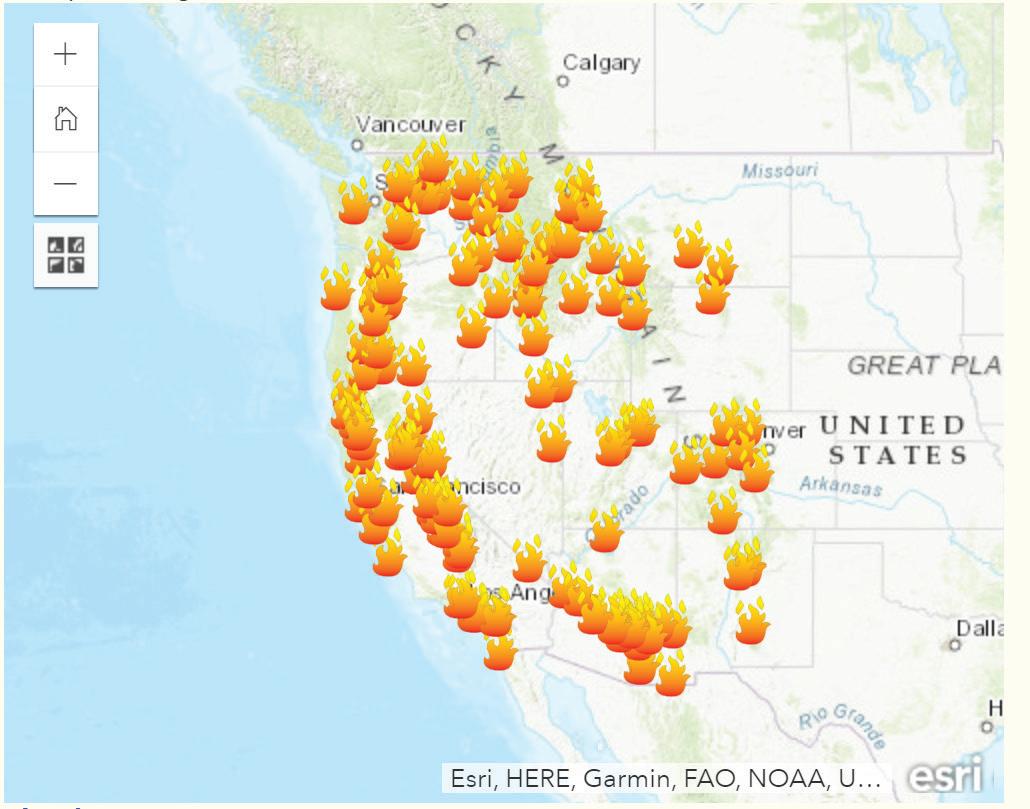
2 minute read
Fire Storm
CLIMATE CHANGE ALONE DIDN’T CAUSE THE 2020 FIRE STORM
by Darrin Gunkel
So the battle lines are drawn: it’s either climate change or bad resource management that ignited the infernos raging in five million acres of Western forests and steppe this summer. At least that’s what a lot of the people want us to believe. Climate change deniers are offering this typically either/or formula. The trick is to avoid letting their denial distract us, or force us into taking one position over another, dividing us into two camps, yet again, tiresomely shouting at each other.
The push for “salvage logging” will be intense in the wake of this conflagration, given the current administration’s open hostility to any sensible environmental policy. The problem with that as a solution to future fires is this: trees burned once don’t burn again. Go figure. Any kind of logging before or after a fire removes bio-mass—stuff that is or was alive—which forest health and recovery depend on. Add to that increased erosion from logging operations, including new and re-opened roads, and you slow or halt forest recovery.
Of course, salvage logging will be sold as “good for the forest.” And there will be a huge push to do “thinning” in areas that have not burned. We’ll be told that environmentalist’s caused all these fires by opposing thinning over the past decades, which is utterly ridiculous at face value, and for at least three other reasons: 1) Thinning operations do happen all the time, 2) Environmentalist and forest conservationists generally are concerned with stopping logging in old growth, which is not only resistant to these super-hot, massive burns, but actually needs periodic fires to keep healthy, which leads us to, 3) Environmentalists and forest biologists
have been begging the Forest Service for decades to start proscribed burns to clear the deadfall fuel build up that stokes fires hot enough to reach tree tops. These crown fires, as they’re called, are the true forest killers, hotter, more difficult to control, and alien to the biology of natural fire progression.
Comparing forest fire severity in the section of the Sierra Nevada that straddles the US-Mexico border confirms this. A century of fire suppression on the US side resulted in massive debris build up and tree-killing fires, whereas on the Mexican side, where natural fires were allowed to run their regular coarse and burn off the build up, crown fires are rare to non-
continued on page 18







